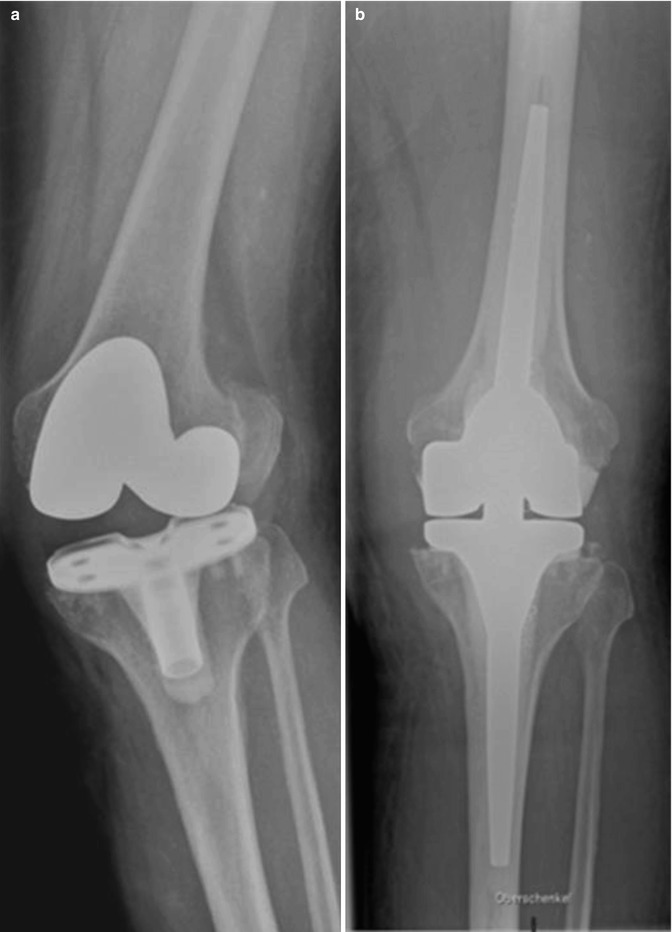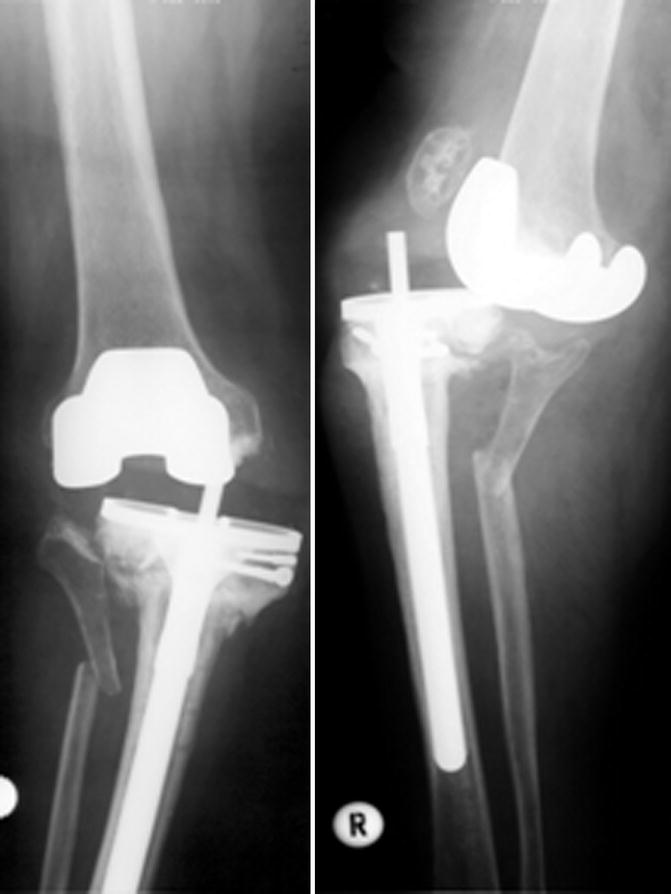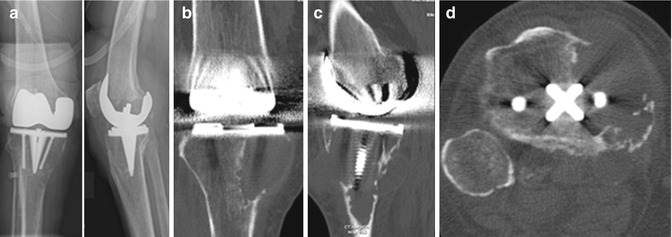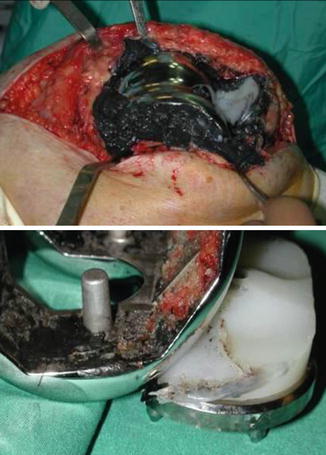Fig. 55.1
Hinged knee implants. (a) Rotating hinged knee Endo-Model® (LINK); (b) pure hinged knee Endo-Model® (LINK)
55.2 Clinical Outcome
Revision TKR is a domain of constrained and hinged TKR. Revision TKR is often complicated by instability (Fig. 55.2), dislocation (Fig. 55.3), severe bone loss (Figs. 55.4 and 55.5), wear problems, periprosthetic fractures, and periprosthetic joint infection. These complications represent indications for the implantation of hinged devices in order to achieve stable mechanical fixation as well as reconstruction of limb alignment, joint line, soft tissue balancing, and bone defects. As shown in Table 55.1, Lombardi et al. developed an algorithm for appropriate implant choice depending on the extent of instability [2].





Fig. 55.2
Instability of unconstrained TKR. (a) Preoperative (valgus instability); (b) postoperative (fixed hinge implant)

Fig. 55.3
Dislocation of semi-constrained TKR

Fig. 55.4
Tibial bone loss in revision TKR. (a) Anterior-posterior and lateral radiographs; (b–d) CT scan (frontal, sagittal, and axial reformation)

Fig. 55.5
Metallosis and polyethylene wear with severe osteolyses
Table 55.1
Appropriate implant choice depending on the extent of instability
Implant | Extension mechanism | MCL | LCL | PCL |
|---|---|---|---|---|
Pure hinge | − | − | − | − |
Rotating hinge | + | − | − | − |
Semi-constrained | + | − | + | − |
Posterior stabilized | + | + | + | − |
Ultra-constrained | + | + | + | − |
Cruciate retaining
Stay updated, free articles. Join our Telegram channel
Full access? Get Clinical Tree
 Get Clinical Tree app for offline access
Get Clinical Tree app for offline access

|





